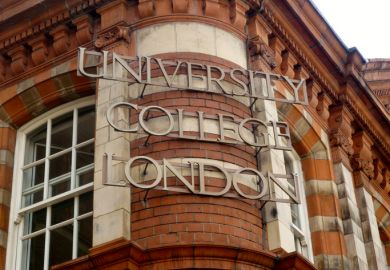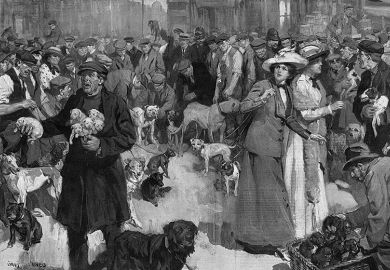This book is ashamedly lascivious yet sensitive in its writing and is a treasure of scholarship that is most unlikely to be superseded.
Malcolm Bull, head of art history at Oxford's Ruskin School of Drawing and Fine Art, analyses the lives and loves - more loves than lives - of the classical gods with the same richness of prose that John Ruskin applied to architecture and nature.
To describe any book as the work of a lifetime sounds hyperbolical, but this must have absorbed at least half of a working life. The author has not only read everything relevant - all 14 illustrated editions of Ovid's Metamorphoses , commentaries, histories and poetry - but he has also seen everything, not just paintings and frescoes, but tapestries, reliefs, jewels, casoni , pastiglia boxes and maiolica - anything that records Olympian activities.
Six of the nine chapters are dedicated to a single god or goddess: Hercules, Jupiter, Venus, Bacchus, Diana and Apollo, tracing the way their images have evolved from representation to representation, text to text.
There are 141 monochrome illustrations in 395 pages of text, and 16 in colour, these last climaxing in Joachim Wtewael's The Wedding of Peleus and Thetis with an abundance of breasts, buttocks, thighs and six-packs.
Even our own Virgin Queen, Elizabeth I, appears in the nude, as Diana judging - severely by her expression - the pregnancy of Callisto, an attendant nymph. Pieter van der Heyden's engraving was, in fact, a political cartoon loosely related to a Titian original. Diana wears the crown of England, but nothing else, while Callisto surprisingly wears the papal tiara and is giving birth to a brood of monsters.
Nothing can be taken for granted because virtually every picture has two intentions. In Battista Franco's Allegory of the Battle of Montemurlo , a naked, overweight Ganymede is carried up to Olympus by a huge paedophile Zeus-eagle, but apparently enjoying the ride. There are so many improbably bare warriors below on the battlefield - one has actually pulled his breeches down to wave at the eagle - that the painting begs to be interpreted as mild pornography. But apparently it is not. The plump Ganymede is intended to be Cosimo de Medici being carried off by the Emperor Charles V, the imperial eagle, to be rewarded for his support in the battle. But could that ever have been anything more than an exercise for an exploration of sexual deviancy?
How common was the exposure of bare flesh before the Renaissance? The determination of everyone, from Michelangelo downwards, to get their subjects stripped off in the most unlikely situations could mean that undress was either quite usual or else something rare, to be explored in art as a treat for the lewd.
But is bare flesh still a regional phenomenon? Driving across France to Switzerland one very hot August day I noticed that, while French roadworkers were invariably covered up, despite the heat, the minute the border was crossed near Basle, the Swiss roadworkers were stripped down to their shorts. So could Franco have picked his models from peasants working in the fields of Italy, or were there building labourers in Flanders for Maarten van Heemskerck to select for those acrobatic satyrs in his Triumph of Bacchus?
Bull is slyly subtle at evoking the mood of a painting. Once he has pointed out "the little Lolita bathing nude" in the foreground of Domenichino's Diana and Nymphs at Play , the 17 other attractive nymphs become mere background material; and his lyrical description of the crescent moon in Cima da Conegliano's Endymion is almost too moving for the picture.
It is, then, curious that Bull gets so tied up in the debate about classicism and naturalism. Classicism was meant to lead to natural observation but, by Christian standards, the classical gods were demons and the whole mythology was unreal, so how could it result in nature? The answer is obvious: through the models. Select some strapping peasant girl as a model for Venus and the human form divine is automatically registered and appreciated, reproduced in paint, half-clad as a nymph, a shepherdess or a goddess.
All the prudish concealment of the Middle Ages with its sin and guilt was on the way out. A play can be more memorable than real life, so can a painting. Like a parable, it concentrates a hitherto unnoticed truth and creates a psychic disturbance in the mind of the observer. Wisely, Bull gives a 17th-century librettist, Fontanelle, the last word: "Among men, the passions are the winds that put everything in motion, but they often cause storms." Passion was what Renaissance art was manipulating. Positive lusts were being set loose from Pandora's box. If reason governed the world, nothing would happen. Since the Renaissance everything has happened, and this Pandora's box of a book explains why.
Timothy Mowl is reader in architectural and garden history, Bristol University.
The Mirror of the Gods: Classical Mythology in Renaissance Art
Author - Malcolm Bull
Publisher - Allen Lane
Pages - 465
Price - £30.00 and £12.99
ISBN - 0 713 99200 X and 0 14 026608 9
Register to continue
Why register?
- Registration is free and only takes a moment
- Once registered, you can read 3 articles a month
- Sign up for our newsletter
Subscribe
Or subscribe for unlimited access to:
- Unlimited access to news, views, insights & reviews
- Digital editions
- Digital access to THE’s university and college rankings analysis
Already registered or a current subscriber? Login



